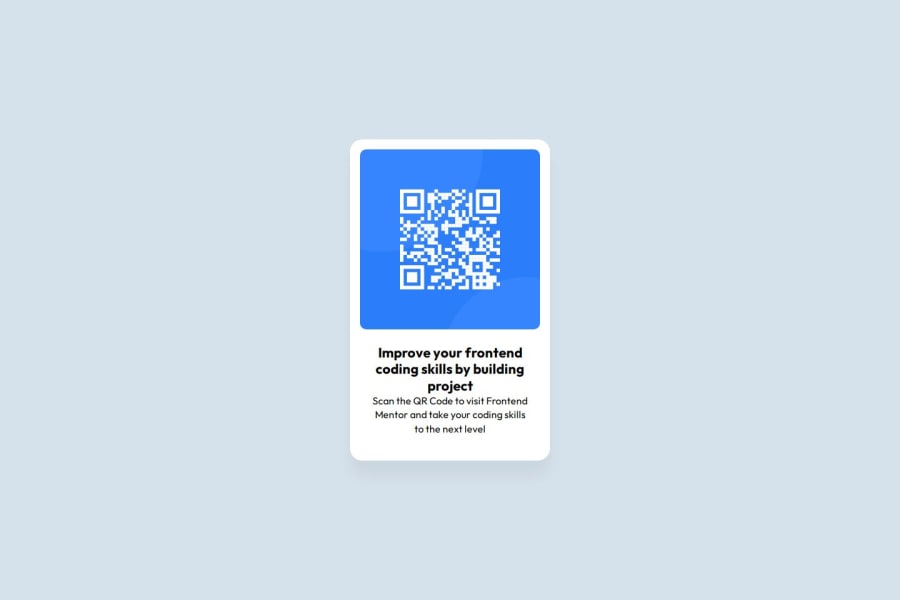
QR Code Component Project - DJS
Design comparison
Solution retrospective
Honestly, the fact that I actually completed this project is a big win for me. But, i think I should strategize a better and efficient way to approach project issues because I spent too much time trying to figure out how to code this without using a flexbox and grid and that dragged too long. I was doing this in the midst of learning CSS but still..
What challenges did you encounter, and how did you overcome them?i was in the midst of learning CSS while doing this project, hence, why i didn't utilize Grid layout/flexbox properly, and yeah aligning the elements were a bit of a challenge but with more practice, it's more better now!
What specific areas of your project would you like help with?The biggest one would be to have a more efficient and cleaner code layout as mine's a bit messy and can be overwhelming when i revisited it to make some changes. Do please point out more effective ways to simply the code, for example, I'm pretty sure I over-used loads of CSS properties more than I needed.
Community feedback
Please log in to post a comment
Log in with GitHubJoin our Discord community
Join thousands of Frontend Mentor community members taking the challenges, sharing resources, helping each other, and chatting about all things front-end!
Join our Discord
